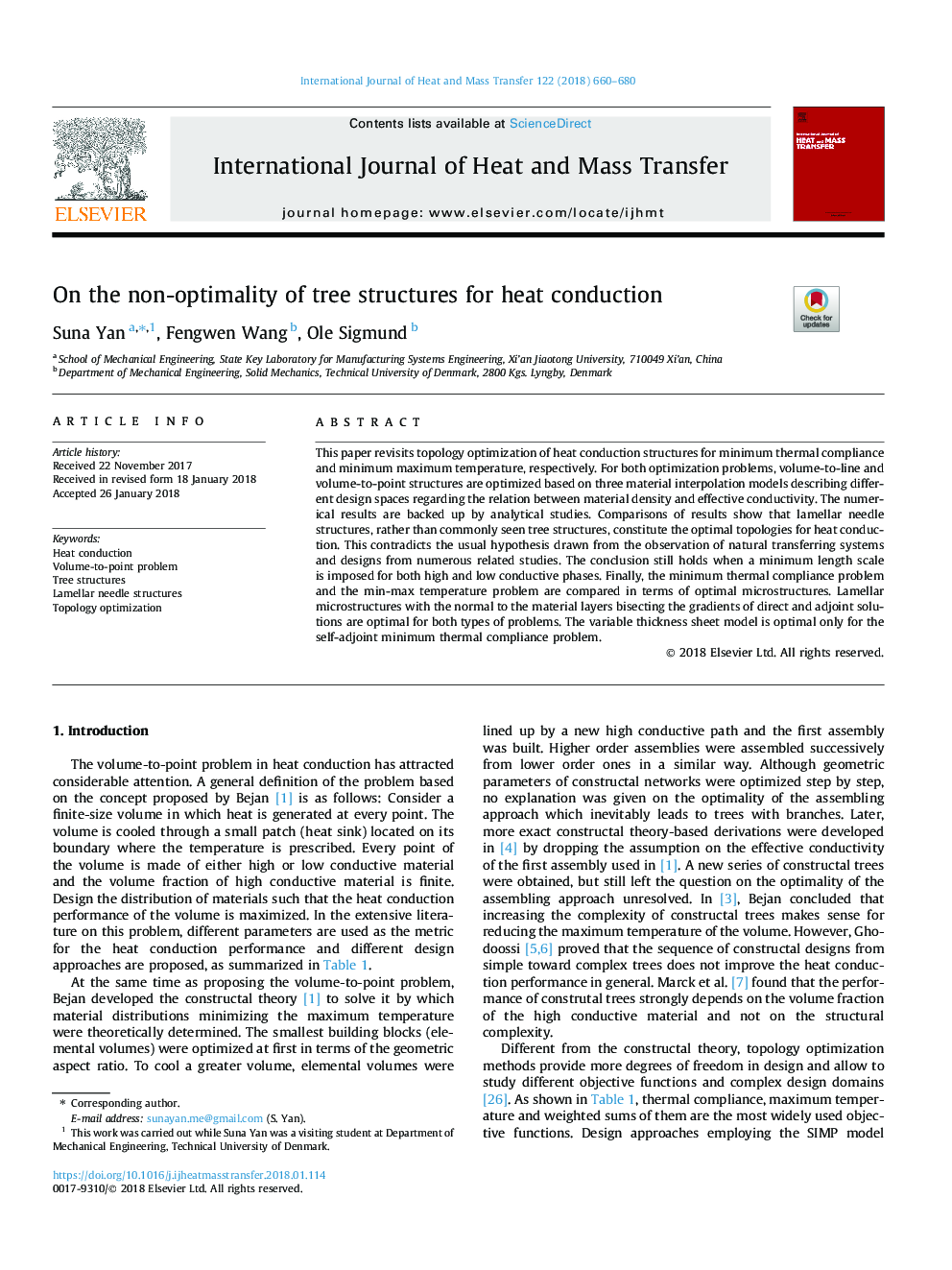| Article ID | Journal | Published Year | Pages | File Type |
|---|---|---|---|---|
| 7054401 | International Journal of Heat and Mass Transfer | 2018 | 21 Pages |
Abstract
This paper revisits topology optimization of heat conduction structures for minimum thermal compliance and minimum maximum temperature, respectively. For both optimization problems, volume-to-line and volume-to-point structures are optimized based on three material interpolation models describing different design spaces regarding the relation between material density and effective conductivity. The numerical results are backed up by analytical studies. Comparisons of results show that lamellar needle structures, rather than commonly seen tree structures, constitute the optimal topologies for heat conduction. This contradicts the usual hypothesis drawn from the observation of natural transferring systems and designs from numerous related studies. The conclusion still holds when a minimum length scale is imposed for both high and low conductive phases. Finally, the minimum thermal compliance problem and the min-max temperature problem are compared in terms of optimal microstructures. Lamellar microstructures with the normal to the material layers bisecting the gradients of direct and adjoint solutions are optimal for both types of problems. The variable thickness sheet model is optimal only for the self-adjoint minimum thermal compliance problem.
Related Topics
Physical Sciences and Engineering
Chemical Engineering
Fluid Flow and Transfer Processes
Authors
Suna Yan, Fengwen Wang, Ole Sigmund,
